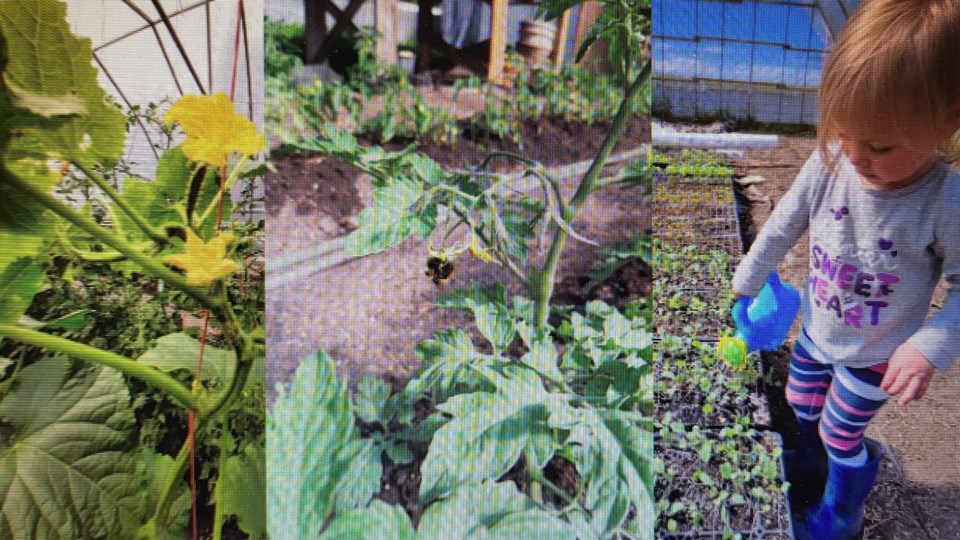BARRHEAD –For the past six years, the Golby Fresh Garden Market has been supplying locally grown produce to the Barrhead region, with the last four years dedicated largely to greenhouse production.
“Growing in a greenhouse is its own beast. It is vastly different from field growing and requires a different mentality,” said Brandon Golby, owner and operator of the market garden.
The Golbys operate out of a 100-foot by 30-foot gothic-peaked steel and plastic greenhouse, which allows them to extend their growing season significantly. The structure provides a stable environment for heat-loving crops such as tomatoes, long English cucumbers, peppers and basil.
“There are benefits of using a greenhouse versus garden growing since your growing season is extended,” Golby said. “You can start plants earlier in the spring and keep growing much later into the fall.”
The warmer and more consistent temperatures of greenhouse growing help plants mature more quickly, resulting in earlier and more frequent harvests. However, the method also comes with a host of challenges.
Greenhouses demand a lot of attention and watering can be required multiple times a day, and temperature and airflow must be closely monitored. “You can’t leave your greenhouse for days or a week without tending to it,” Golby said.
Ventilation is critical to greenhouse health, he added. North-facing windows, slashed vents, roll-up walls, and fans all contribute to regulating temperature, controlling humidity, and preventing disease.
Weekly tasks include fertilization, pruning, and vine training. Disease and pests remain a constant threat, requiring regular cleanup and removal of dead or diseased plant matter. Golby also cautions against introducing plants from outside sources without checking them for signs of pests or disease.
The cost of greenhouse growing can vary based on size, equipment, and maintenance. Golby recommends a double-layer poly covering with a fan to inflate the space between layers for added insulation and durability.
For those starting from seed, he advises moist but not soggy soil. Seeds should be planted half to three-quarters of an inch deep, and soil should be consistently moist until germination. All greenhouse crops thrive in soil temperatures of 20 to 24C.
The Golbys begin their tomato crop in mid-February to early March, transplanting twice—first at four to five inches tall, and again at eight to ten inches. They add crushed egg or oyster shells as a calcium source during transplanting and fertilize weekly.
Tomatoes, once established, require watering at least twice a day, in the morning and late afternoon. Cucumbers, which prefer cooler conditions, need less water and must be kept dry to prevent mould and disease. Trellising is effective for long English varieties, and pruning is ongoing.
“When cucumbers start to flower, we take those flowers off to encourage stronger root and leaf growth,” Golby explained. This process ultimately boosts fruit production and lengthens the growing season.
To prepare for the next season, the Golbys let their greenhouse rest through the winter to naturally eliminate harmful pathogens.
While the learning curve for greenhouse gardening can be steep, Golby encourages others to give it a try. “Greenhouse growing can be intimidating at first, but it can also be richly rewarding.”
More about the Golby family’s market garden can be found at golbyfamilyfarm.ca.



